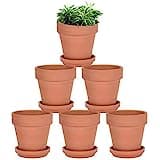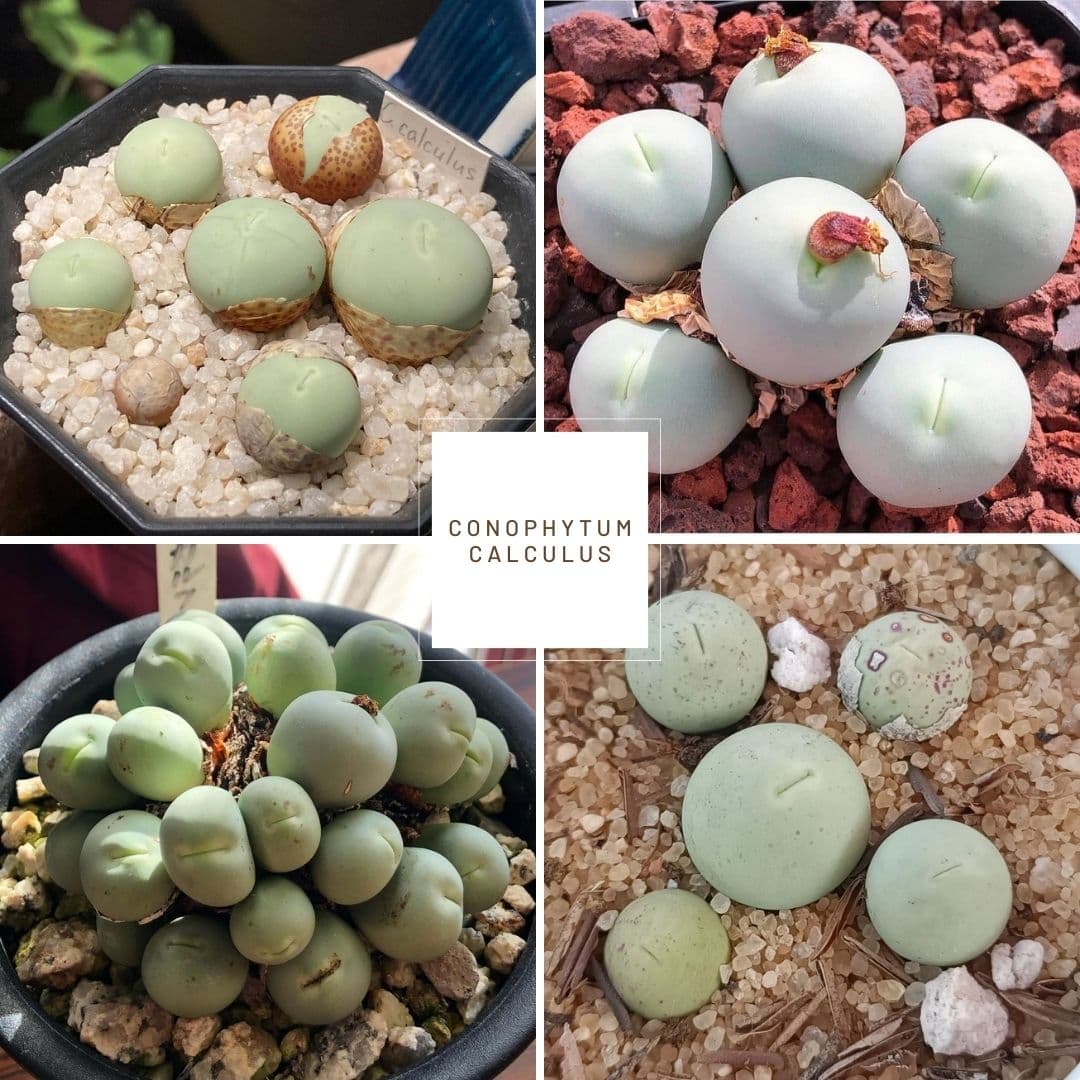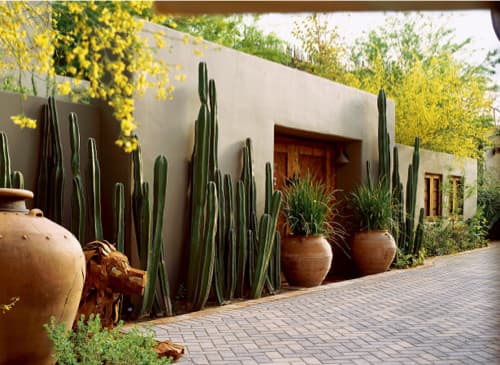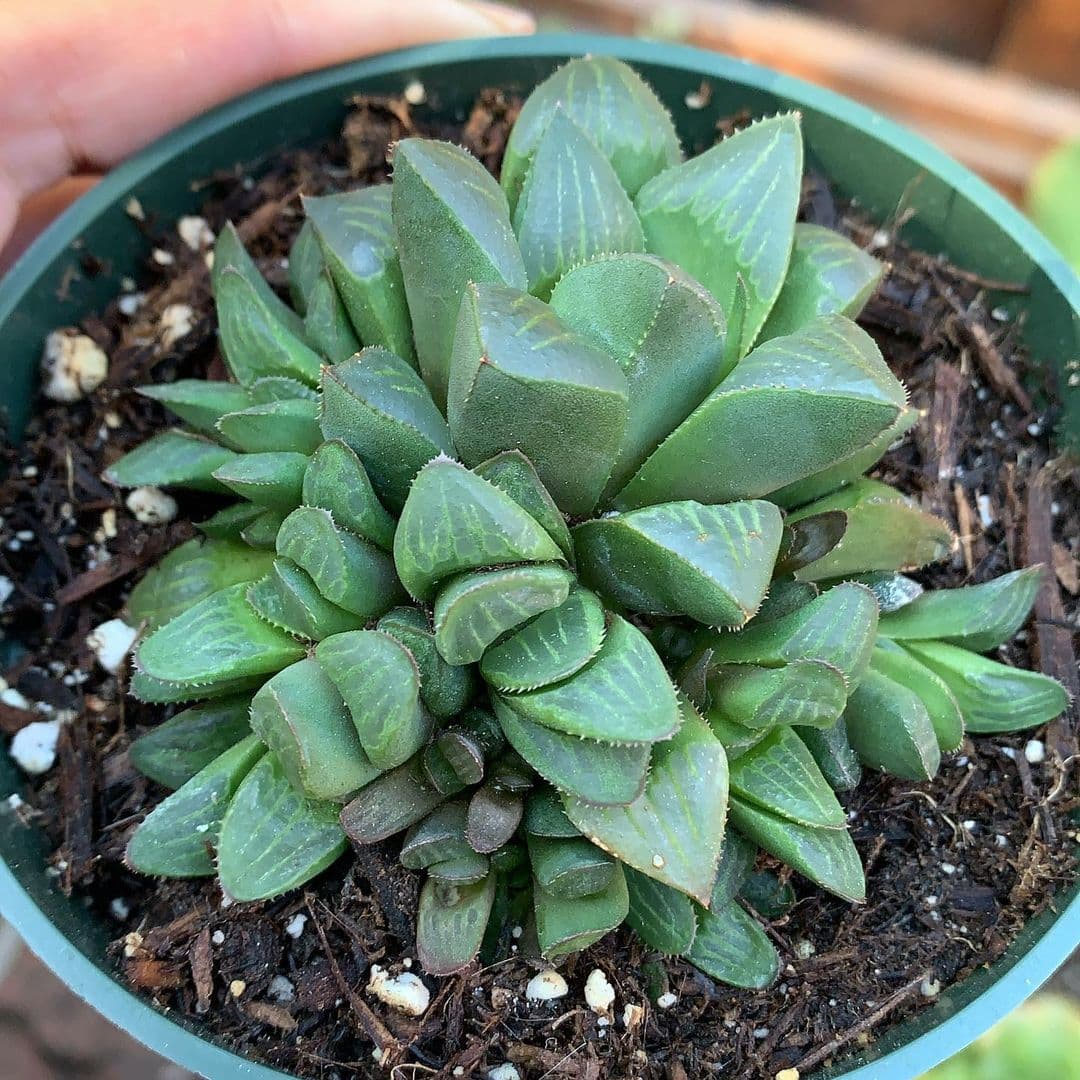My Haworthia Identification Guide
Posted by Grace on April 15, 2024
Haworthia is one of my favorite succulents. The translucent and fleshy leaves are very appealing.
Haworthia is a very large genus within the Asphodelaceae family, containing over 100 species that are native to southern Africa. I tried my best to make a list of all the different types or species of haworthia, to help myself identify them. I'm sharing it with you!
If you haven't owned a Haworthia yet, I hope this guide can also give you some ideas about what kind of Haworthia you'd like to own.
(I'm still updating this page!)
Need tools for succulent propagation and repotting? Here are my go-to tools: mini tool set (including syringe 💉, gloves 🧤, tweezers 🪤, dust blower 💨, tiny shovels 🛠️) and well-draining mix 🌱.Contents
Haworthia akaonii
(Coming soon!)
Haworthia angustifolia
-
Color: Pale green to dark green leaves that turn brownish in full sun.
-
Shape: Long, narrow leaves.
-
Size: Rosettes reach a diameter of 8 cm. The leaves, numbering about 20, are upright, acuminate, and lanceolate, measuring 3–6 cm in length and 6–12 mm in width.
Haworthia ao-onii
-
Color: The leaves of Haworthia ao-onii have a dark green to brownish-green color.
-
Shape: Haworthia ao-onii has compact, bulging leaves that are often pink-flecked. The leaves have a slightly rounded tip.
-
Size: Haworthia ao-onii is a relatively small species, with a mature size of around 3-5 inches tall and wide.
Haworthia arachnoidea
-
Shape: The leaves are thick, fleshy, and covered in fine, white, spider-web-like hairs, giving the plant a distinctly "hairy" or "arachnoid" appearance.
-
Color: The leaves are typically green to grey-green in color, and can develop reddish or brownish tones when exposed to more sunlight.
-
Size: The rosettes typically reach 5-10 cm (2-4 inches) in diameter.
Haworthia aristata
(Coming soon!)
Haworthia attenuata
Haworthia attenuata is also commonly known as Zebra Haworthia. It is very popular house plant!
-
Shape: Short and tapered, arranged in rosettes
-
Size: Rosette diameter is 6–12 cm
-
Color: Dark green with bands of white tubercles on both upper and lower sides
Important to note that, Haworthia attenuata and Haworthia fasciata look very similar, so the two are often mislabeled as each other.
However, Haworthia fasciata is rare. You can tell them apart because Haworthia fasciata has smooth inner leaves, while Haworthia attenuata has bumps on both sides of its leaves. Also, Haworthia fasciata leaves are thicker and tend to curve more inward. Sometimes, older Haworthia fasciata plants grow long stems, which Haworthia attenuata doesn't do.
Haworthia bayeri
-
Size: Solitary rosettes that are 8-10 cm (approximately 3-4 inches) in diameter.
-
Color: Dark green leaves. When exposed to more sunlight, the leaves can develop a brownish hue. The upper leaf surfaces are semi-translucent.
-
Shape: The leaves have rounded, retuse (indented) tips, which helps distinguish it from similar Haworthia species. The leaves are marked with longitudinal lines or reticulated (net-like) patterns, rather than spots or flecks. The leaf margins can be slightly toothed, especially in some regional forms.
Haworthia blackburniae
(Coming soon!)
Haworthia bolusii
(Coming soon!)
Haworthia caesia
(Coming soon!)
Haworthia calva
(Coming soon!)
Haworthia caulesca
(Coming soon!)
Haworthia chloracantha
-
Color: Yellowish-green to brownish-green. The leaves can develop a deep reddish or burgundy flush when the plant is exposed to more direct sunlight or drought stress.
-
Shape: Long, slender leaves that grow in a loose, proliferous rosette formation. The leaves have a distinct "chloracantha" or toothed pattern along the leaf margins.
-
Size: Rosettes typically reaching under 3 inches in diameter.
Haworthia chloracantha is a prolific, clustering species that produces many offsets around the base.
Haworthia coarctata
-
Color: The leaves of Haworthia coarctata are green in color, with white raised lines or tubercles on the surface.
-
Shape: Haworthia coarctata has a compact, vertical growth habit, forming tight rosettes of leaves. The leaves are fleshy and triangular in shape.
-
Size: Haworthia coarctata is a relatively slow-growing species, but can reach heights of around 8 inches tall. The rosettes typically grow to around 6 inches in diameter.
Note that, Haworthia coarctata may be confused with Haworthia reinwardtii, as they both share the same stemmed habit. However, the warts (tubercles) on the leaves of Haworthia coarctata are smaller, smoother, and rounder, and the leaves are usually wider and flatter compared to those of Haworthia reinwardtii.
Haworthia compacta
(Coming soon!)
Haworthia cooperi
Haworthia cooperi var. truncata
One of the most popular haworthia!
-
Size: About 1.5 to 2 inches
-
Shape: Short, stubby, round, and bulbous.
-
Color: Translucent, water-filled leaves. Blue-green but will turn coppery red with exposure to direct sun and drought.
Haworthia cooperi var. obtusa
There is no such a Haworthia called Haworthia cooperi var. obtusa. This adds a lot of confusion in IDing Haworthia.
Haworthia cuspidata
Haworthia cuspidata, also known as the Star Window Plant, is probably a hybrid of Haworthia cymbiformis and Haworthia retusa. It may not be a naturally occurring species, but rather a hybrid cultivated in captivity.
-
Color: The leaves of Haworthia cuspidata are bright green in color. The leaves may have a mottled or translucent leaf window pattern on them.
-
Shape: The leaves are thick, fleshy, and have pointed tips. The leaves form a star-like shaped rosette.
-
Size: Haworthia cuspidata typically grows to a diameter of around 4 inches.
Important to note, Haworthia cuspidata and Haworthia cymbiformis look very similar. However, Haworthia cuspidata has thicker, pointier leaves that grow upright in a star shape, while Haworthia cymbiformis has flatter, less pointy leaves that spread out more. Haworthia cuspidata's leaves have clear parts near their tips, like windows, while Haworthia cymbiformis has solid green leaves without those clear parts.
Haworthia cymbiformis
-
Size: Small and form clumps of rosettes.
-
Shape: Thick and fleshy with a distinctive boat-shaped appearance, not recurved like some other Haworthias. The leaves usually feature transparent streaks around the tips.
-
Color: Light green with transparent areas around the tips, adapted to peek above sand in its natural habitat.
Haworthia cymbiformis var. obtusa
-
Color: Bright, lime green color. The leaves can develop a reddish or pinkish blush when exposed to more direct sunlight.
-
Shape: The leaves are narrow, cylindrical, and somewhat translucent in appearance. The leaves grow in a rosette formation.
-
Size: Typically around 4 cm (approximately 1.5 inches) in diameter.
Haworthia decipiens
(Coming soon!)
Haworthia diaphana
-
Shape: The leaves are thick and fleshy, with a distinctive boat-shaped or cymbiform appearance.
-
Size: Haworthia diaphana typically grows to a compact size, reaching heights of around 4-6 inches (10-15 cm) and forming a rosette shape.
-
Color: Light green to pale green in color, and can develop a pinkish or reddish hue when exposed to bright sunlight.
Haworthia emelyae
Haworthia emelyae var. major
Haworthia emelyae var. major goes by the common name Haworthia emelyae.
-
Shape: Haworthia emelyae var. major forms rosettes with triangular, textured leaves. The leaves start growing upright before angling out to open their translucent "windows" to the sun.
-
Color: silvery, pinkish-brown color.
-
Size: The plant can grow up to a height of 3.2 inches (8 cm). It is a "large" variety of Haworthia emelyae.
Haworthia emelyae var. comptoniana
Haworthia emelyae var. comptoniana is also known as Haworthia comptoniana.
-
Color: The leaves of Haworthia comptoniana have a bright, lime green color. The leaves can develop a reddish or pinkish blush when exposed to more direct sunlight.
-
Shape: The leaves are narrow, cylindrical, and somewhat translucent in appearance. The leaves grow in a rosette formation.
-
Size: Haworthia comptoniana is a small, slow-growing succulent plant. The plant size is typically around 4 cm (approximately 1.5 inches) in diameter.
Haworthia elizeae
(Coming soon!)
Haworthia fasciata
-
Shape: The leaves are stiff, fleshy, and narrowly triangular in shape. They tend to curve inwards more than the related Haworthiopsis attenuata.
-
Color: The leaves are dark green in color, with attractive bands or stripes of white, warty tubercles on the outer surface. Some forms, like the 'browniana' variety, can have a dark red color.
-
Size: Haworthia fasciata is a small, rosette-forming succulent, generally less than 10 cm (4 inches) high. The rosettes can reach 5-6 inches in diameter.
Haworthia floribunda
-
Color: Dark green or brownish-green
-
Shape: Forms stemless rosettes of twisted, lance-shaped leaves
-
Size: Around 3-4 cm in diameter.
Haworthia fukuyae
Haworthia glauca
- Color: The leaves of Haworthia glauca are typically light green to pale green in color, but can develop a pinkish or reddish hue when exposed to bright sunlight.
- Size: Typically reaching heights of 2-12 inches (5-30 cm) tall with a similar spread.
- Shape: Haworthia glauca grows in a compact, rosette shape. The leaves of Haworthia glauca are thick and fleshy, with a distinctive boat-shaped or cymbiform appearance.
Haworthia grenieri
(Coming soon!)
Haworthia herbacea
-
Color: The leaves are typically greenish-yellow when young, maturing to a dark waxy green color as the plant ages. The leaves may also develop raised, pure white spots or speckles randomly across the surfaces.
-
Shape: The rosettes can proliferate and form dense clusters over time. The leaf texture is rough, with a reticulate (net-like) pattern and translucent areas between the veins. The leaf margins and keel are fringed with firm, glassy white spines.
-
Size: Haworthia herbacea is a small, low-growing succulent that forms compact rosettes typically 2-8 cm (0.8-3 inches) in diameter. The leaves can reach up to 6 cm (2.4 inches) long and 1 cm (0.4 inches) wide at the base.
Haworthia heidelbergensis
(Coming soon!)
Haworthia intermedia
(Coming soon!)
Haworthia kikuhigasa
-
Color: bright, lime green color. The leaves can develop a reddish or pinkish blush when exposed to more direct sunlight.
-
Shape: The leaves are narrow, cylindrical, and somewhat translucent in appearance. The leaves grow in a rosette formation.
-
Size: Typically around 4 cm (approximately 1.5 inches) in diameter.
Haworthia koelmaniorum
-
Color: Deep reddish-brown. The leaf color can intensify or fade depending on the amount of sunlight exposure.
-
Size: Around 5 cm (approximately 2 inches) in diameter.
-
Shape: Thick and fleshy, with a crackled appearance on top.
Haworthia limifolia
-
Size: Rarely exceeds four inches in diameter and an inch or two in height.
-
Shape: Its leaves are triangular and deeply ridged, forming a rosette. The fat, textured leaves are distinctive.
-
Color: Dark green
Haworthia lockwoodii
-
Size: The rosette can reach up to 4 inches (10 cm) wide. Its leaves are yellowish-green, about 2.4 inches (6 cm) long and 1.2 inches (3 cm) wide, with translucent tips marked by usually eight green to reddish-brown lines. Flowers are white and grow on stems up to 9 inches (22.5 cm) tall in spring.
-
Shape: During dormancy, it forms an onion-like shape with tightly packed, dried leaves.
-
Color: In summer, more than half of its leaves dry out, turning papery white. These wilted leaves almost completely cover the rosette, shielding younger leaves from the sun.
Haworthia longiana
-
Shape: Long and slender leaves, with firm and upright foliage.
-
Color: Dark green, with the potential to flush lime to orange under stress.
-
Size: Mature leaves can grow up to 8.0 inches long.
Haworthia maculata
(Coming soon!)
Haworthia magnifica
Haworthia magnifica var. atrofusca
-
Color: The leaves have a dark, reddish-brown or "atrofusca" color. The leaves can turn yellowish or develop a pink hue when exposed to full sun.
-
Shape: The leaves are broadly ovate to lanceolate in shape. The leaves are flat to slightly concave in appearance.
-
Size: Can grow up to 13 cm (around 5 inches) in diameter. The inflorescence (flower stalk) can reach up to 25 cm (around 10 inches) in length, with 10-15 white flowers.
Haworthia magnifica var. splendens 'Hana Aoi'
-
Color: The leaves of Haworthia magnifica var. splendens 'Hana Aoi' have a distinctive blue-green or "blue flower" color.
-
Shape: This Haworthia variety has a compact, rosette-forming growth habit with fleshy, triangular-shaped leaves.
-
Size: Haworthia magnifica var. splendens 'Hana Aoi' is a relatively slow-growing succulent, typically reaching heights around 8 inches tall. The rosette diameter is usually around 6 inches wide.
Haworthia maughanii
(Coming soon!)
Haworthia maraisii
-
Color: The leaves of Haworthia maraisii have a dark coloration.
-
Shape: The leaves are bristled and retused (having a depressed or indented center). It forms clumps or clusters of these small, dark-colored, bristled and retused leaves.
-
Size: The rosettes are slowly proliferous and grow up to 2.8 inches (7 cm) in diameter.
Haworthia marumiana
(Coming soon!)
Haworthia margaritifera
(Coming soon!)
Haworthia marxii
(Coming soon!)
Haworthia mirabilis
Haworthia mirabilis var. badia
Haworthia mirabilis var. badia, aka Haworthia badia, is the largest growing species in the Haworthia mirabilis complex.
- Color: With some sun exposure, the plant develops exquisite chestnut brown shades.
- Shape: Thick, gelatin-like leaves and forms small, slowly proliferous rosettes. The leaves have a prominent central line with two shorter side lines.
- Size: The rosettes can reach 5-7 cm in diameter. The leaves are retuse and translucent, measuring 3-4 cm in length.
Haworthia mollis
(Coming soon!)
Haworthia monticola
(Coming soon!)
Haworthia mucronata
(Coming soon!)
Haworthia mutica
Haworthia mutica cv "Byakuya"
"Haworthia mutica cv Byakuya", also known as "White Night", is a special plant created by Renny Wong, one of the most heralded Haworthia breeders in the world.
- Color: Minty green leaves with great contrast
Haworthia nortieri
(Coming soon!)
Haworthia outeniquensis
(Coming soon!)
Haworthia parksiana
(Coming soon!)
Haworthia picta
-
Color: This variety of Haworthia picta, developed in Japan through generations of breeding, showcases sturdy plants with a greyish hue and speckled white markings, accented by brown spots on the upper leaf surfaces.
-
Size: Typically around 4 cm wide, these plants have a compact form with a limited number of leaves, though variations are common in cultivation.
-
Shape: Sporting a stemless rosette, the plant features short, slightly recurved leaves ending in convex tips.
Haworthia picta has many varieties, including Haworthia picta cv. "okubo", Haworthia picta cv. "Blue Diamond", Haworthia picta "Platinum", Haworthia picta cv. "Pandora", Haworthia picta cv. "Haku ja", and more.
Haworthia picta cv. 'Pandora'
- Color: Green leaves with rows of tiny white dots, blushing pink streaks under sun stress
Haworthia pubescens
(Coming soon!)
Haworthia pulchella
(Coming soon!)
Haworthia pygmaea
Haworthia pygmaea crystallina cv. 'Ice City' mutant
"Ice City" is Haworthia cv. "Ice City" is the highly sought-after mutant form of Haworthia pygmaea crystallina.
The abbreviation "cv." stands for "cultivar".
- Shape: Rounded leaf-tips with leaf windows almost entirely covering them. “Ice City” retains the scabrous windows of H. pygmaea.
- Color: Green and translucent leaves.
- Size: Approximate 6cm in diameter.
Haworthia regina
(Coming soon!)
Haworthia reinwardtii
(Coming soon!)
Haworthia reticulata
(Coming soon!)
Haworthia retusa
(Coming soon!)
Haworthia rigida
(Coming soon!)
Haworthia rossouwii
(Coming soon!)
Haworthia sapphaia
(Coming soon!)
Haworthia semiviva
(Coming soon!)
Haworthia springbokvlakensis
-
Color: Haworthia springbokvlakensis exhibits reddish-brown, thumb-like leaves with translucent tips with longitudinal or net-like venation.
-
Size: Typically, the plant forms solitary rosettes measuring 7 to 10 cm in diameter, with each rosette consisting of 8 to 12 leaves.
-
Shape: The succulent is stemless, with leaves nearly flat to the ground, forming a rosette arrangement.
Haworthia subularis
(Coming soon!)
Haworthia transiens
(Coming soon!)
Haworthia truncata
This is my favorite Haworthia!
-
Size: 2 cm (0.79 inches) tall and spans 10 cm (3.9 inches) wide.
-
Shape: Nearly rectangular cross-section, upright, truncated tops.
-
Color: Gray or gray-green with white or gray lines and warty textures.
Haworthia truncata var. maughanii
Haworthia truncata var. maughanii is considered a specific variety or cultivar of the Haworthia truncata species, characterized by its spiral rosette growth pattern and rounded, triangular-shaped leaves.
Haworthia truncata x maughanii
Haworthia truncata x maughanii is a cross or hybrid between the standard Haworthia truncata form and the maughanii variety.
Haworthia turgida
-
Color: Haworthia turgida forms a wide, thick rosette of short, light green leaves.
-
Shape: The leaves have a flattened, turgid (swollen) appearance with translucent "leaf windows" that allow sunlight to enter.
-
Size: The rosette can grow up to 5 inches tall and 5 inches wide
Haworthia variegata
(Coming soon!)
Haworthia veltina
(Coming soon!)
Haworthia venosa
(Coming soon!)
Haworthia villosa
(Coming soon!)
Haworthia viscosa
(Coming soon!)
Haworthia vlokii
(Coming soon!)
Haworthia wimii
-
Size: a solitary rosette ranging from 3 to 6 cm in diameter
-
Shape: Dark green with prominent veins, translucent tips, whitish teeth along the edges, and a short bristle at each tip
-
Color: Dark green with translucent areas and white features on the edges
Haworthia wittebergensis
(Coming soon!)
Haworthia zantneriana
(Coming soon!)
Final Word
I hope it is helpful for you to identify the Haworthia types.
Also, did you find your favorite Haworthia species from this guide? I did! I love the glass-like ones with big windows, such as Haworthia truncata and Haworthia cooperi var. truncata. Haworthia emelyae var. comptoniana is my favorite!






